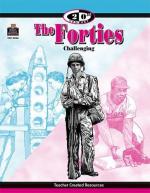|
This section contains 1,247 words (approx. 5 pages at 300 words per page) |

|
The Core Concept. .
In the period after World War II American universities debated a proposal to restructure postsecondary and secondary curricula around a "core" of courses devoted to the humanities. The foremost proponent of this idea, University of Chicago president Robert M. Hutchins, hoped it would cultivate a public familiarity with what he called "the tradition of the West." Educational curricula prior to the 1940s included many humanities disciplines — literature, art, music, political and social philosophy — but the dominant curricular tendency was toward the sciences, economics, and psychology. Curricula at the time also tended toward specialization and fragmentation; many progressive educators, for example, argued that education could be streamlined by having engineers study engineering rather than take classes in music appreciation. Hutchins criticized such a philosophy as simplistic, arguing that narrow, specialized education undermined tradition and led to...
|
This section contains 1,247 words (approx. 5 pages at 300 words per page) |

|




